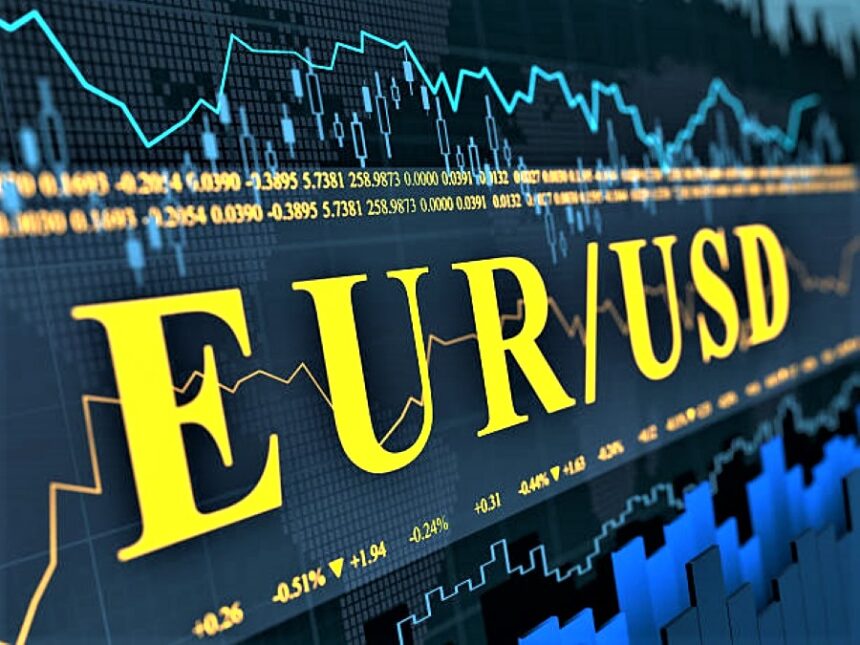EURUSD Trades Lower Ahead of ECB Interest Rate Decision All Eyes on Lagarde’s Guidance.
EURUSD falls below 1.1350 as ECB expected to deliver its sixth consecutive rate cut. Market focus shifts to Lagarde’s press conference for future policy cues amid US-Japan trade progress and global uncertainty.
EURUSD Edges Lower Before ECB Rate Decision
The EURUSD pair dipped to near 1.1350 during Thursday’s European trading session as traders braced for the European Central Bank’s (ECB) monetary policy announcement. The decline came amid expectations that the ECB will cut interest rates by 25 basis points (bps), marking its sixth consecutive rate cut since the bank initiated its easing cycle in June of the previous year.
Market participants are pricing in another reduction that would bring the ECB’s Deposit Facility Rate down to 2.25% and the Main Refinancing Operations Rate to 2.4%. This anticipated move is widely seen as part of the ECB’s broader strategy to support economic recovery and guide inflation back to its 2% target.
ECB’s Dovish Cycle: Sixth Rate Cut in Focus
The ECB’s aggressive easing campaign reflects the central bank’s urgency in responding to softening inflation and declining growth momentum across the Eurozone. With inflation gradually falling closer to target and economic data painting a sluggish picture, investors believe that the ECB will maintain its dovish tone.
This would be the seventh rate cut overall and sixth in a row, reinforcing the view that the ECB is committed to stabilizing the economy amid growing global uncertainty. The recent easing trajectory is aligned with broader policy stances seen in other advanced economies where central banks have either paused or begun cutting rates.
Market Focus Shifts to Lagarde’s Forward Guidance
While a rate cut is largely priced in, the main market-moving event will be ECB President Christine Lagarde’s press conference following the decision. Investors will be listening closely to see whether Lagarde maintains her narrative that rates remain “restrictive.”
If Lagarde signals openness to further cuts or expresses concern about downside risks to growth, EUR/USD may continue its downward trend. However, if she hints that the ECB could pause after today’s cut to assess incoming data, the Euro may find some support.
Her views on wage growth, consumer spending, and the external trade environment—particularly the risks from U.S. tariffs—will be critical in shaping expectations for future monetary policy.
Eurozone at Risk from US Trade Policies
Geopolitical tensions are also playing a major role in the ECB’s decision-making framework. The Eurozone economy remains highly vulnerable to external shocks, particularly from U.S. trade policies under President Donald Trump. The European Union (EU) has been navigating tense negotiations with Washington to avoid tariffs on automobiles and agricultural products.
If the EU fails to secure favorable terms, the impact on Germany’s export-heavy economy and the broader Eurozone could be significant. Furthermore, China’s ongoing trade war with the U.S. is forcing it to look for alternative markets—potentially leading to increased competition in Europe.
The ECB may consider these dynamics when setting policy, as global trade instability could weigh on the region’s already fragile economic recovery.
US Dollar Rebounds on Progress in Japan Trade Talks
The US. Dollar is also benefiting from renewed optimism in global trade negotiations. The USD Index (DXY), which measures the greenback against a basket of six major currencies, has rebounded toward 99.60 following positive developments between the United States and Japan.
On Wednesday, President Trump posted on TruthSocial about “big progress” in negotiations with Japanese officials, including Japan’s economic revitalization minister, Ryosei Akazawa. The statement helped boost market sentiment and reduced fears of escalating trade disputes—at least between the U.S. and its allies.
The progress also supports the U.S. Dollar by diminishing the need for safe-haven flows into other currencies like the Euro or the Japanese Yen.
Trade War with China Still Clouds the Outlook
Despite improvements in the U.S.-Japan relationship, the broader backdrop remains clouded by the unresolved trade conflict between the U.S. and China. The standoff has now become a political waiting game, with both sides reluctant to make the first move.
White House press secretary Karoline Leavitt reinforced this stance on Tuesday, stating that while President Trump remains open to a deal, “the ball is in China’s court.” This posture suggests no breakthrough is imminent, keeping global investors wary of risk.
If the US.-China conflict escalates further, it could result in renewed volatility across asset classes and negatively affect global growth expectations, including in Europe.
Domestic Uncertainty Weighs on the US Dollar
While the Dollar has gained ground recently, it is not immune to downside risks. Investors remain concerned about the outlook for U.S. inflation and economic growth.
Federal Reserve Chair Jerome Powell added to the uncertainty on Wednesday by acknowledging that economic growth “likely slowed in the first quarter of 2025,” compared to last year’s performance. However, Powell reassured markets that the U.S. economy remains “solid” and the Fed will maintain its “wait and see” approach until more data becomes available.
This stance introduces further ambiguity for the USD, especially if upcoming data show signs of a sharper slowdown or rising inflation pressures.
EURUSD Technical Outlook: Bearish Bias Intact
From a technical perspective, EURUSD remains in a corrective phase after testing the psychological resistance at 1.1400 earlier this week. The pair’s failure to hold above this level and its subsequent dip toward 1.1350 indicate growing bearish momentum.
The next support zone lies near 1.1320, followed by 1.1280, which could be tested if the ECB delivers a dovish surprise or Lagarde hints at further cuts. On the upside, any relief rally would likely face resistance near 1.1380 and 1.1400.
Traders should also monitor the Relative Strength Index (RSI) and MACD indicators, which currently suggest weakening bullish momentum.
Key Market Movers to Watch
1. ECB Policy Statement and Lagarde’s Remarks: These will shape near-term expectations for the Euro and determine whether EURUSD finds a bottom or continues to slide.
2. US Trade Policy Developments: Any shift in tone regarding China or the EU could cause sharp moves in USD pairs.
3. US Economic Data Releases: Particularly inflation, employment, and GDP numbers will influence the Fed’s path and affect Dollar strength.
Conclusion: All Eyes on Lagarde Amid Volatile Backdrop
The EURUSD pair remains under pressure as the ECB prepares to deliver its sixth straight rate cut. While the cut itself may already be priced in, the real catalyst for future moves will be ECB President Christine Lagarde’s tone and guidance on upcoming policy moves.
With global trade uncertainties, particularly involving the U.S., China, and Japan, continuing to influence market sentiment, traders should brace for volatility. The balance between dovish ECB guidance and cautious optimism surrounding the U.S. Dollar could determine the near-term trajectory for EURUSD.
[faq-schema id=”39404″]









